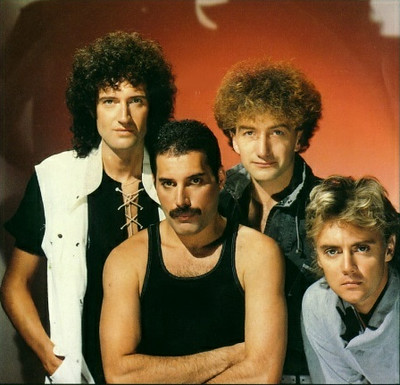It’s hard to think of a group more synonymous with synthesizers than Tangerine Dream. On 1982’s White Eagle, the German band marshaled all its considerable synthesis powers to create the title track, a pulsating piece that lulls the listener into a hypnagogic state. Helping Tangerine Dream achieve this early ’80s masterpiece was the JUPITER-8, then Roland’s flagship synthesizer.
Tangerine Dreams
Formed in Berlin in 1967, Tangerine Dream started as a psychedelic rock band but soon gravitated towards abstract forms. The group was an early adopter of the synthesizer, starting with massive modular systems and adding as it went, incorporating the latest technology in an endless pursuit of synthetic dream music.
By the early ’80s, the band—now comprised of founder Edgar Froese, Christopher Franke, and the latest to join, Johannes Schmoelling—had hit its stride. The group was in the middle of a string of successful studio albums, live releases, and (more importantly, as time went on) film soundtracks. These soundtracks honed the group’s melodic chops, ushering Tangerine Dream back from deep space into a streamlined sound.
The White Eagle
After the success of 1981’s Exit, which saw the band embrace digital synthesis and experiment with shorter track lengths, Tangerine Dream continued in a similar vein with White Eagle. The album is a varied affair, with sleek synth lines and drum machine grooves that explore the various parameters of what the group had become. There’s the sidelong suite of “Mojave Plan,” the new wave-like “Midnight In Tula,” and the timeless and angular “Convention of the 24.” Yet, it’s the title song that truly resonates.
Starting with a synth pluck sequence and accompanied by a light rhythm coaxed from a TR-808, “White Eagle” cycles through a harmonic progression, layering digital and sampled sounds on top. It’s utterly hypnotic, slow and steady, and the kind of song the listener wishes was far longer than its four-minute run time.
"Starting with a synth pluck sequence and accompanied by a light rhythm coaxed from a TR-808, 'White Eagle' cycles through a harmonic progression, layering digital and sampled sounds on top."
While boasting Tangerine Dream hallmarks, notably that unique sequence, “White Eagle” stands out. This is likely due to the influence of Johannes Schmoelling, who took the lead on the track. With a different background than Froese or Franke (he was a classical musician and pipe organ master), Schmoelling lent a unique feel to the whole record.
Crime Scene
Although the best candidate for a single, it would take inclusion on a TV show for the song to receive its own release, albiet in a modified form. Tatort, which translates to “crime scene” in English, is a long-running German cop show. Tangerine Dream provided several songs for its 1982 season, including “Das Mädchen auf der Treppe,” a remix of “White Eagle.”
“Das Mädchen auf der Treppe” varies the main melody sounds. However, it leaves the trademark sequenced line intact. The delays on the sequence are more prominent in the remix, giving the song a propulsive feel, one that probably worked well in a TV drama context.
To JUPITER And Beyond
Sequenced synth lines are the bread and butter of Tangerine Dream. Rather than find a sequencer and stick with it, the group changed and upgraded them as new tools became available. The early 1980s were the age of big poly synths, and Tangerine Dream was on board with this technology. Similarly, the members embraced the latest in sequencer hardware. The group used an MC-8 around this time and other sequencers, including a custom-made system. And yet the seemingly random sequence in “White Eagle”/“Das Mädchen auf der Treppe” didn’t come from any of these. It emerged from a JUPITER-8.
Rather than rely on sequencers to play each note perfectly, Schmoelling hit on using the JUPITER-8 arpeggiator. Instead of going with the usual up-down, or up-and-down pattern, he chose the random setting. Roland’s first random arpeggiator appeared on the JUPITER-4. Similar to the way Nick Rhodes of Duran Duran manipulated the JUPITER-4’s random arpeggiator on “Rio,” Schmoelling exploited the arp capabilities of the JP-8. Not entirely random, the result is both melodic and unexpected.
"Rather than rely on sequencers to play each note perfectly, Schmoelling hit on using the JUPITER-8 arpeggiator. Instead of the usual up-down, or up-and-down pattern, he chose the random setting."
Not content to stop there, Schmoelling roped in a second JUPITER-8 with similar arpeggiator settings. By syncing them together, panning them, and adding a time-synced delay, he created a memorable sequence—and song.
Flying High
Johannes Schmoelling left Tangerine Dream in 1985 with Christopher Franke following in 1987. Sadly, founder Edgar Froese left us all in 2015. Still, the band continues under the leadership of Thorsten Quaeschning. Now 41 years old, “White Eagle” remains a staple of the Tangerine Dream live experience. Once that undeniable sequence begins, you know you’re in for a mesmerizing journey.
Part of the song’s enduring allure is its twin, intertwined JUPITER-8 sequence. By exploiting a quirk of the JUPITER-8, Schmoelling and Tangerine Dream surprised listeners with an unsequenced sequence. Almost a musical koan, it still beguiles and entrances more than four decades since its release.







